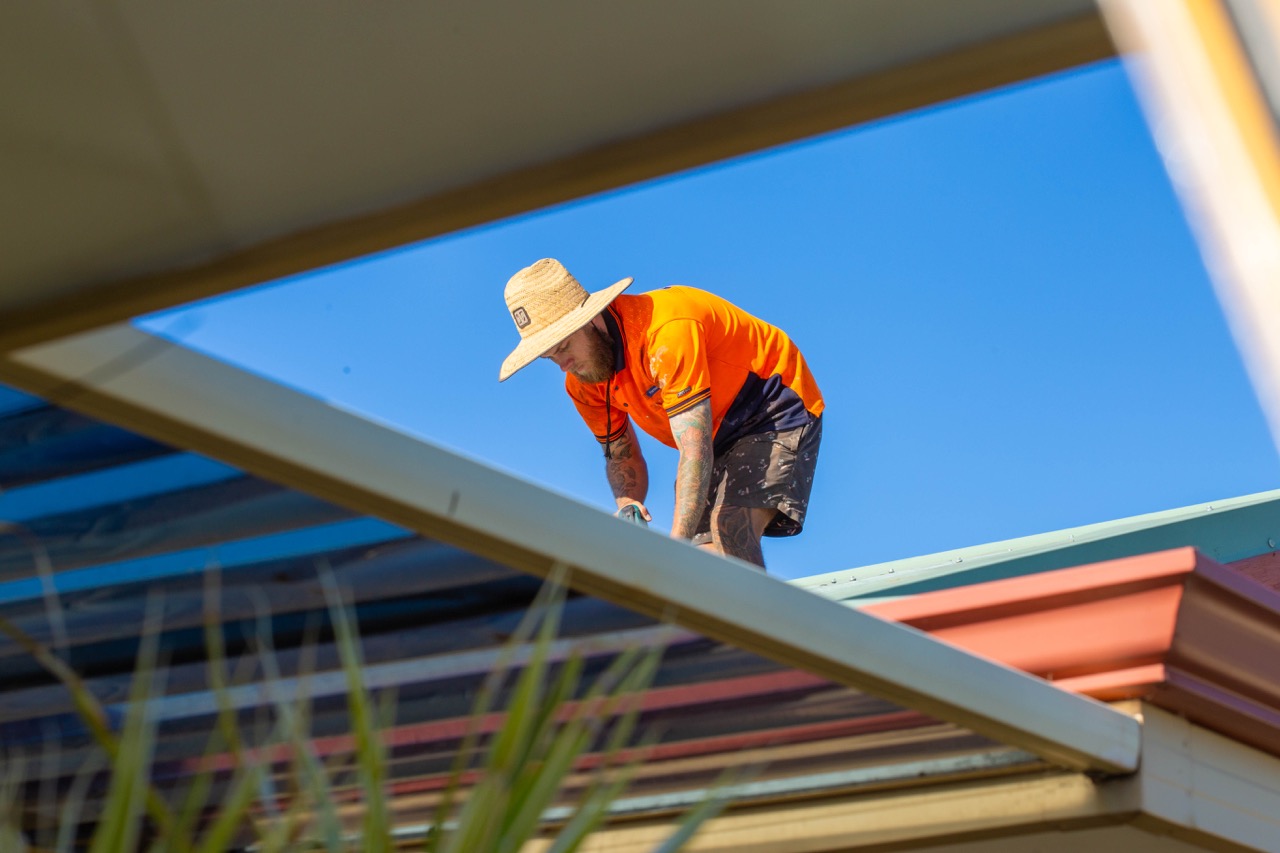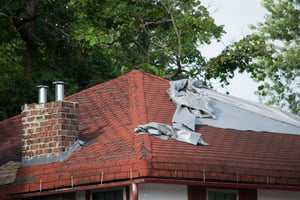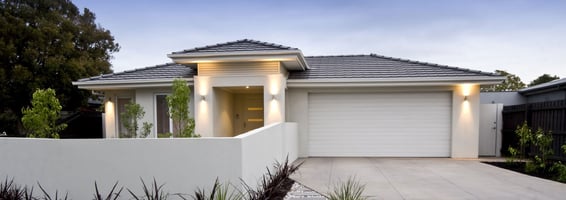Hailstorms can be incredibly destructive, especially for your roof. The impact of hail can lead to...

Quick and Efficient Roof Leak Repair Services
Roof leaks are more than just a minor inconvenience; they can lead to significant damage and costly repairs if not addressed promptly. When water seeps through your roof, it can compromise the structural integrity of your home, cause mould growth, and damage your belongings. That's why it's crucial to understand the importance of quick and efficient roof leak repair. In this blog post, we'll delve into the common causes of roof leaks, the signs to watch for, and why prompt repairs are essential. Additionally, we'll guide you through the steps you can take to address leaks and highlight why choosing a reputable company is your best choice for professional roof leak repair services.
Understanding Roof Leak Repair
Common Causes of Roof Leaks
Roof leaks can arise from a variety of sources, each posing unique challenges for homeowners. Some of the most common causes include:
- Weather Damage: Severe weather conditions such as heavy rain, snow, hail, and strong winds can cause significant damage to your roof, leading to leaks.
- Poor Installation: If your roof was not installed correctly, it is more susceptible to leaks. Improper sealing and inadequate underlayment can create vulnerabilities.
- Ageing Materials: Over time, roofing materials can deteriorate, losing their effectiveness in protecting your home. Shingles may crack, curl, or fall off, leading to leaks.
- Lack of Maintenance: Regular maintenance is crucial to the longevity of your roof. Neglecting routine inspections and repairs can result in small issues becoming major leaks.
Signs You Need Roof Leak Repair
Early detection of roof leaks can save you from extensive damage and costly repairs. Here are some signs that indicate you may need roof leak repair:
- Water Stains on Ceilings: Discoloured patches or stains on your ceilings are a clear indication that water is infiltrating your roof.
- Mould or Mildew Growth: The presence of mould or mildew, especially in your attic or along ceiling lines, suggests a moisture problem caused by a leak.
- Dripping Water: Visible water dripping from your ceiling or walls during or after a rainstorm is a sure sign of a leak.
- Damaged or Missing Shingles: Inspect your roof for shingles or tiles that are cracked, curled, or missing. These issues can lead to leaks if not addressed promptly.
The Importance of Quick Roof Leak Repair
Preventing Structural Damage
One of the most critical reasons to address roof leaks promptly is to prevent structural damage to your home. Water intrusion can weaken the framework, causing wood to rot and metal to rust. Over time, this can compromise the integrity of your entire roof, leading to costly repairs or even a complete roof replacement. Quick roof leak repair ensures that your home remains safe and structurally sound.
Avoiding Health Risks
A leaking roof can create a conducive environment for mould and mildew growth, which can pose serious health risks to you and your family. Mould spores can spread through the air, causing respiratory issues, allergies, and other health problems. By promptly repairing roof leaks, you minimise the risk of mould infestation and protect your family's health.
Cost Savings in the Long Run
While it may be tempting to delay repairs, doing so can lead to much higher costs down the road. Small leaks can quickly escalate into larger problems, requiring extensive repairs or even a full roof replacement. By addressing roof leaks immediately, you can save money in the long run by avoiding extensive damage and the associated high repair costs.
Steps to Take for Roof Leak Repair
Immediate Actions
When you discover a roof leak, it’s crucial to take immediate steps to mitigate the damage. Here are some actions you can take right away:
- Temporary Fixes: Use tarps or roofing tape to temporarily seal the leak and prevent further water intrusion. These solutions are not permanent but can buy you some time until professional repairs are made. Make sure the tarp is securely fastened and covers the affected area completely.
- Minimising Interior Damage: Move furniture and valuables away from the affected area to prevent water damage. Use buckets or containers to catch dripping water and protect your floors. Dry any wet areas promptly to prevent mould growth. Place towels or mops around the area to absorb excess water.
Long-term Solutions
After taking immediate actions, it’s important to address the root cause of the leak with long-term solutions. Here are the steps involved in a thorough roof leak repair process:
- Assessing the Damage: Conduct a comprehensive inspection of your roof to identify the source and extent of the damage. This may involve checking both the exterior and interior of your roof. Look for damaged shingles, cracked flashing, or clogged gutters that may be contributing to the leak. Pay attention to areas around chimneys, vents, and skylights, as these are common leak points.
- Identifying the Leak Source: Sometimes, the location where water enters your home is not directly below the damaged roof area. Water can travel along roof panels or beams before dripping down. Trace the leak back to its source by examining the roof’s surface and the attic space.
- Professional Repair Services: Contact a professional roofing company, like Permacoat, to handle the repairs. Experienced roofers will provide a detailed assessment and recommend the best course of action. They have the expertise and tools needed to fix the leak properly and ensure your roof is in top condition. Professional services may include replacing damaged shingles, repairing flashing, sealing leaks, and cleaning gutters.
- Repairing Flashing and Seals: Flashing is a critical component that seals joints and prevents water from entering your home. If flashing is damaged or improperly installed, it can be a significant source of leaks. Repair or replace damaged flashing around chimneys, vents, and skylights to ensure a watertight seal.
- Replacing Damaged Shingles: If shingles are cracked, curled, or missing, they need to be replaced to restore the roof's integrity. Ensure new shingles match the existing ones to maintain the roof’s appearance and functionality.
- Cleaning and Repairing Gutters: Clogged gutters can cause water to back up and seep under the roof. Clean gutters regularly to ensure proper drainage and repair any damaged sections to prevent leaks.
Preventive Measures
To reduce the risk of future leaks, consider implementing preventive measures alongside your repair efforts:
- Roof Coating: Applying a roof coating can provide an additional layer of protection against water damage. Roof coatings are particularly beneficial for flat or low-slope roofs.
- Improving Attic Ventilation: Proper attic ventilation helps regulate temperature and moisture levels, reducing the risk of ice dams and condensation-related leaks.
- Regular Maintenance: Schedule regular maintenance checks with a professional roofing company to catch and address potential issues early.
How to Maintain Your Roof to Prevent Future Leaks
Regular Inspections
Regular inspections are crucial for identifying potential issues before they become significant problems. Here’s how to keep your roof in top shape:
- Professional Inspections: Hire a professional roofing company to inspect your roof at least once a year. They can identify minor issues that you might miss and provide expert advice on necessary repairs or maintenance.
- Self-Inspections: Between professional inspections, conduct your own checks. Look for missing, cracked, or curling shingles, and inspect the flashing around chimneys and vents.
Seasonal Maintenance Tips
Different seasons present unique challenges for your roof. Implement these seasonal maintenance tips to keep your roof in excellent condition:
- Spring: Clean your gutters and downspouts to ensure proper drainage. Check for damage caused by winter storms or heavy snow.
- Summer: Inspect for signs of wear and tear from heat and UV rays. Trim overhanging branches that could damage your roof during summer storms.
- Autumn: Remove leaves and debris from your roof and gutters to prevent clogs. Inspect for any damage from summer storms and prepare your roof for winter.
- Winter: If you’re in an area prone to hail or snow, check for ice dams and remove snow buildup to prevent weight-related damage. Ensure your attic is properly insulated to reduce the risk of ice dams.
Addressing Minor Issues Early
Small issues can quickly escalate into major problems if left unaddressed. Proactively managing these minor concerns can save you time, money, and stress in the long run. Here’s how to stay on top of minor roof repairs:
- Fix Damaged Shingles: Replace missing, cracked, or curled shingles as soon as you notice them. Damaged shingles can expose the underlying roof materials to the elements, leading to water intrusion and further damage. Ensuring your shingles are intact helps maintain the protective barrier of your roof.
- Seal Cracks and Leaks: Apply roofing sealant or caulk to small cracks and leaks promptly. This can be a quick and effective way to prevent water from seeping into your home. Pay special attention to areas around roof penetrations such as vents, chimneys, and skylights, where leaks are more likely to occur.
- Clean Gutters Regularly: Keep your gutters clean and free of debris to ensure proper water flow and reduce the risk of leaks. Clogged gutters can cause water to back up under the roof edges, leading to leaks and potential damage to the roof structure. Regularly inspect and clean your gutters, especially after heavy storms or during autumn when leaves accumulate.
- Inspect Flashing and Seals: Regularly check the flashing around chimneys, skylights, and vents. If you notice any gaps, cracks, or signs of wear, address them immediately. Properly sealed flashing is crucial for preventing leaks at these vulnerable points.
- Monitor Attic Ventilation: Ensure your attic is well-ventilated to prevent moisture buildup, which can lead to mould growth and structural damage. Adequate ventilation helps maintain a balanced temperature and moisture level, reducing the risk of condensation and ice dams.
- Trim Overhanging Branches: Trees with branches hanging over your roof can cause damage by scraping shingles or providing a pathway for animals. Trim back any overhanging branches to prevent these issues and reduce the amount of debris that falls onto your roof.
Conclusion
Addressing roof leaks promptly is essential to safeguarding the structural integrity of your home, protecting your health, and saving money on future repairs. By understanding the common causes of roof leaks, recognizing the signs, and taking immediate and long-term actions, you can effectively manage and prevent leaks. Regular inspections, seasonal maintenance, and prompt attention to minor issues are key to maintaining a leak-free roof.
For professional and efficient roof leak repair services, trust Permacoat. Our expertise, quality materials, and commitment to customer satisfaction make us the ideal choice for all your roofing needs. Don't let a minor leak turn into a major problem – contact Permacoat today for reliable and expert solutions.


